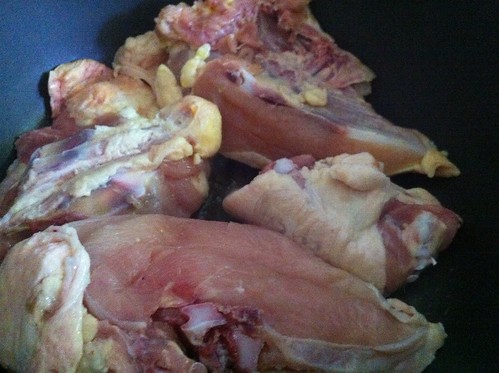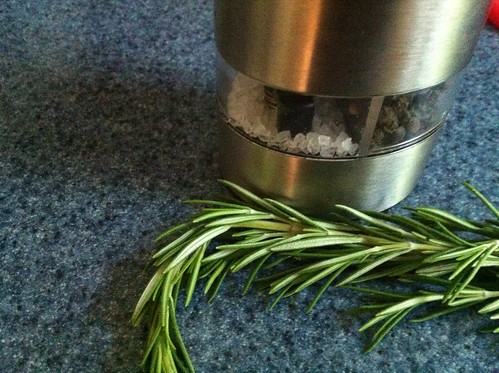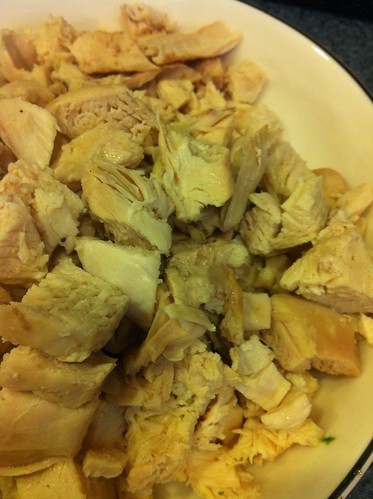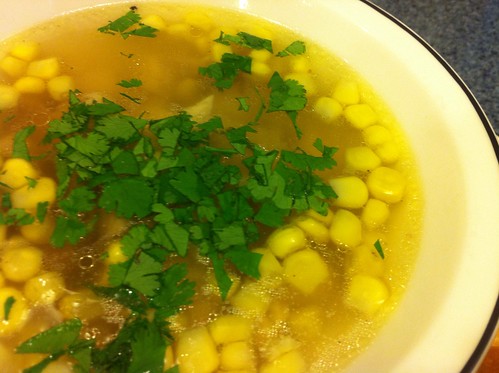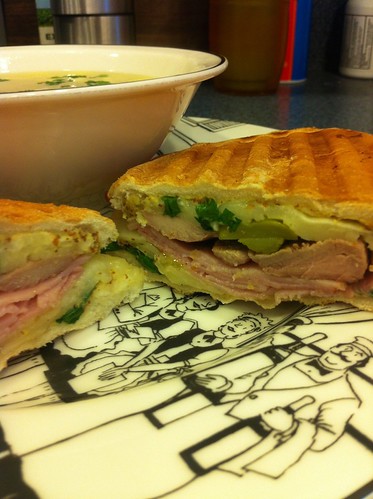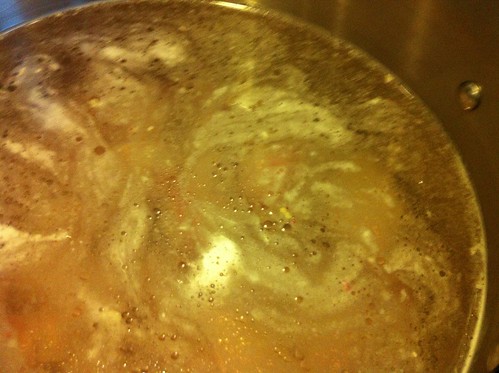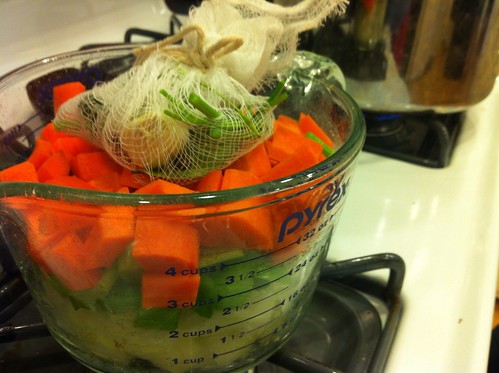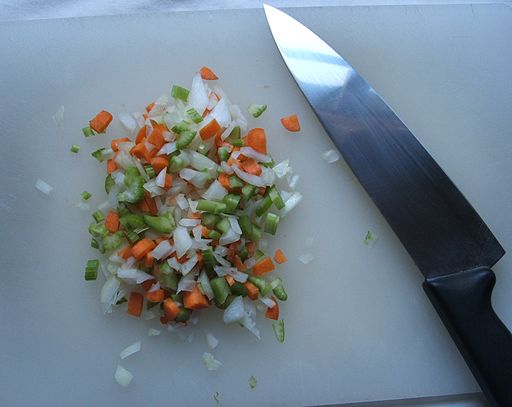The other night, I finally had a little bit of time to breathe, so I decided to re-crack open my "textbook," The Professional Chef
To start the process, the first thing I had to do was brown up some chicken pieces. The recipe calls for a "stewing hen" cut into 6 pieces, but guess what I found on my Peapod.com expedition this week? I found a whole chicken, already cut into pieces, bones, skin, gizzards and all. Perfect, I still got fresh food, but I took a tiny bit of work out of it...that's what I like to find! So, in batches, I browned up my chicken pieces in one pot, and then placed them in another, larger, stock pot. I think the recipe means to use the same pot all the way through, but since I don't have restaurant-size stock pots, or giant areas of stove top, I actually used a lobster pot to make this soup. I knew I was going to need depth, and that's the deepest I've got!
Once I had browned all of the pieces of chicken (this was done in a few batches so as not to crowd them), and they had all been tossed into the lobster/stock pot, I added a bunch of other things! A nice, rough cut of mirepoix (carrots, onions and celery) got thrown in, along with minced jalapeno, chopped ginger, and a couple of bay leaves. The knife cuts on these things don't need to be precise since the soup gets strained at the end, and all this stuff gets tossed anyway. I sauteed this mixture for about 5 minutes to bring out the flavors before adding them to the pot.
After chopping and adding all of these delicious, fresh ingredients to the pot, I poured in my GALLON of chicken stock, and seasoned it all up with some rosemary, and salt and pepper.
An hour and a half later, I took a leisurely stroll back into the kitchen to find wonderful aromas, and some very tender chicken pieces. I pulled them all out of the broth mixture, and pulled all of the meat from the bones, chopping it all into bite-sized pieces as I went. The soup continued to simmer while I did this.
Once the chicken was all chopped up, and ready for the final product, I strained my soup through a sieve, removing all of the chopped veggies and seasonings. I allowed the broth to sit for a few minutes so that the fat could kind of coagulate on top. I know, gross, but hey - it happens - and you don't want to EAT it, do you? Once a few minutes had passed, I was able to skim the oils and fattiness off the top, leaving a lovely, clear broth that smelled delicious! I sweated some garlic in a pot with some canola oil (the recipe calls for palm oil, but that is expensive and hard to find) before adding it to the broth, re-seasoned it, and since I'd just pulled out all the flavorful bits, allowed it to simmer for a few more minutes. After adding the chicken back to the pot, along with a bag of corn kernels, and some long-grained rice that I had cooked separately and allowed to air-dry for a bit, it was ready to serve! All it needed was a slight garnish of chopped cilantro!
While the soup simmered for the last few minutes, I pulled together a couple of traditional Cubano sandwiches, chock-ful of roast pork, black forest ham, provolone cheese, cilantro, pickles and dijon mustard. I set them on the Panini Grill while I dished out the soup. This was a really festive and delicious meal. The soup was fulfilling without being heavy (although my husband and I both felt like it was missing something - a spice maybe, but something - it was almost like I should have left the ginger and jalapeno IN the soup), and the Cubano - mmm, delicioso!
while I dished out the soup. This was a really festive and delicious meal. The soup was fulfilling without being heavy (although my husband and I both felt like it was missing something - a spice maybe, but something - it was almost like I should have left the ginger and jalapeno IN the soup), and the Cubano - mmm, delicioso!

